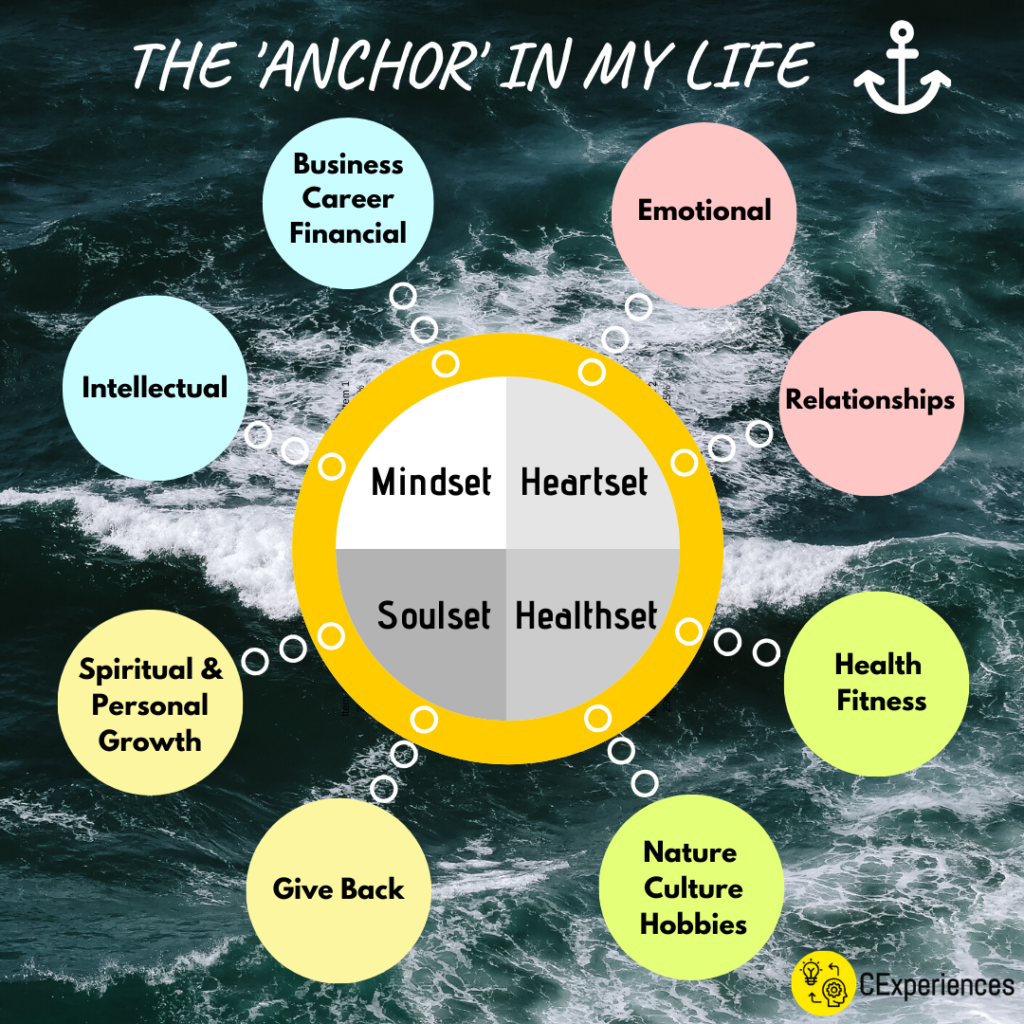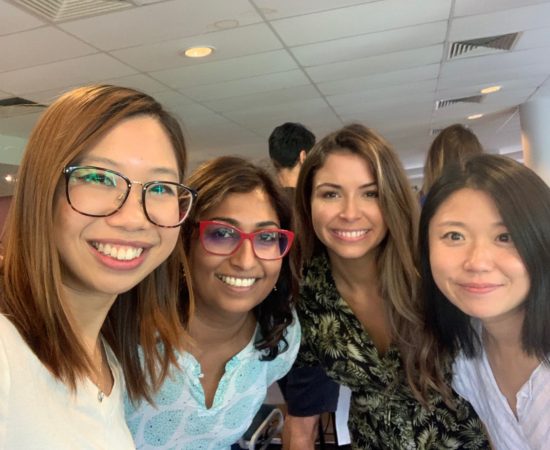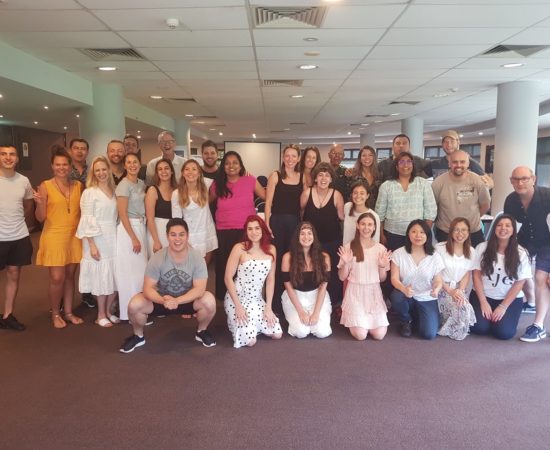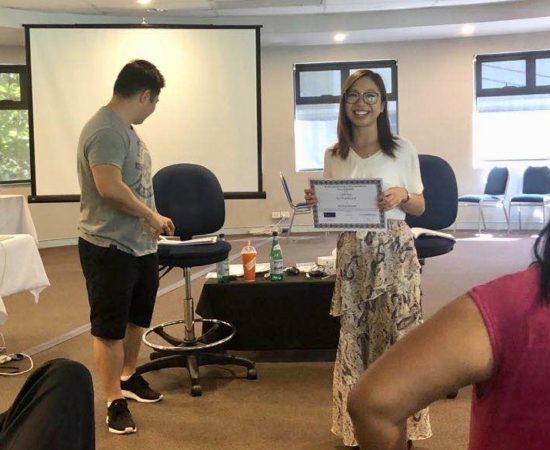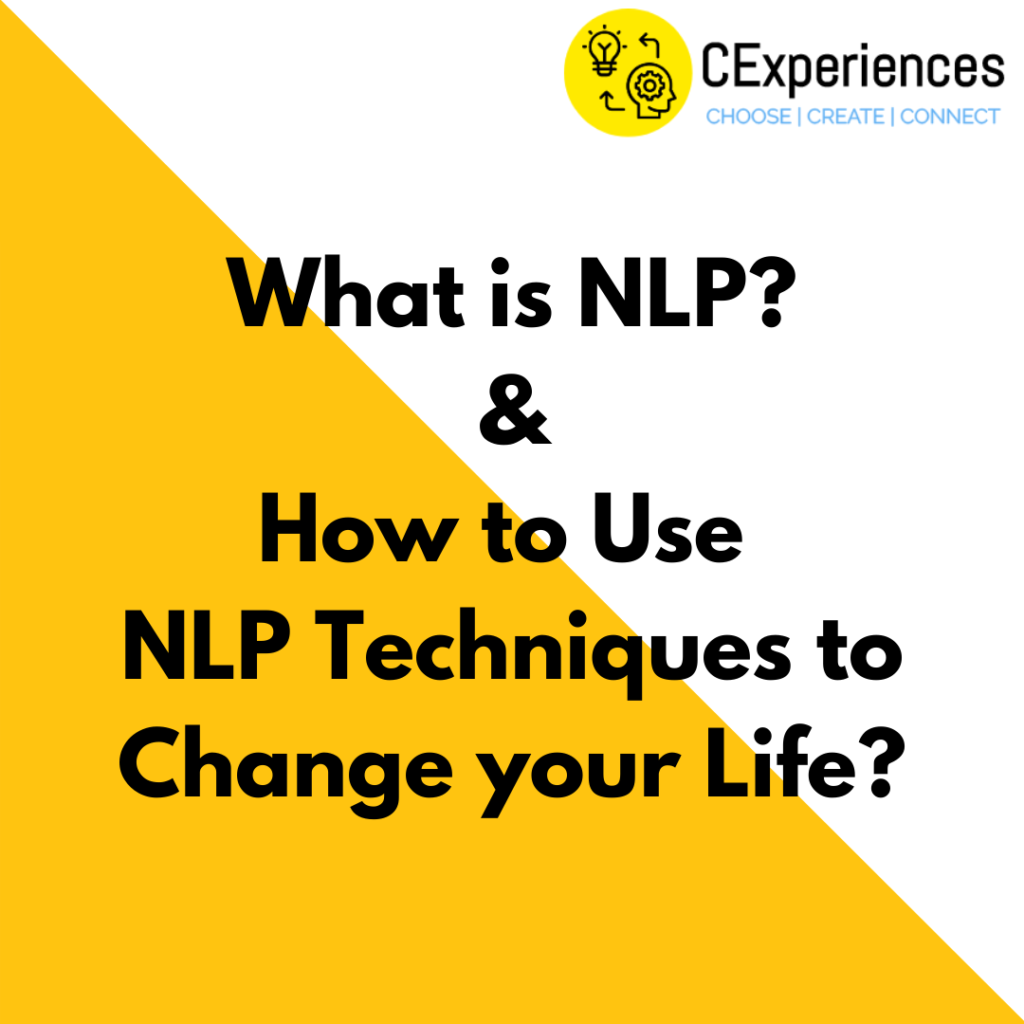Have you ever wondered what your life would be like if you had a deep understanding of how and why people do what they do – how they think, feel, communicate and behave?
How would this affect your ability to lead people, parent your children, connect with your partner, communicate with friends, family or colleagues or succeed in your business?
After learning about Neuro Linguistic Programming (NLP) and applying its powerful set of tools, techniques and ways of thinking, I have learned how to:
- Get a greater awareness of myself and others and gain a better understanding of how I have created my own internal reality;
- Communicate more effectively with everyone I meet with confidence, clarity and a deeper connection in every context of my life and business;
- Pick up on subtle cues in people’s language and behaviour, build rapport, ask precise questions get to the heart of understanding and meaning;
- Access emotional resources of my choosing, amplifying them and permanently anchor them;
- Decode the strategy and inner-game behind all behaviour so that I can replicate excellence and change unhealthy habits;
- Become a credible, reputable and professional Life and Business Coach and empower my clients to make rapid and lasting change with my skills, experiences, aptitude, perspective, emotional intelligence and a proven methodology and framework.
So, Are you ready to Learn More about NLP and Use it to Change Your Life?
FIRST OF ALL, WHAT IS NLP?
Well, Neuro Linguistic Programming (NLP) is a set of tools, techniques and ways of thinking of how we communicate, both with ourselves and others.
NLP is first and foremost a communication model.
It is a model of how we operate, and function given our mind-body-emotion system.
It is a model of how we map or model “information.”
It is a model of the structure of resourcefulness so we “run our own brain” and manage our own states.
It is a model of the structure of excellence, so we can replicate genius.
NLP is really the emergence of a new leading-edge model about:
- How to manage and run your own brain and mind more effectively.
- How you represent your own experiences in a way that make them seem real.
- How to map the world so that you can align your objective experience in the world with your subjective experience.
- How to manage your moods and state experiences so you have them and they do not have you.
- How to develop effective models and strategies for your life’s desires.
Most people learn NLP, because they aren’t satisfied with the results of their habitual ways of processing – mindset, emotions, and behaviours. They want to achieve more, do more, have the skills to connect more deeply with others, be more confident, motivated and self-assured. Be more influential with others and have more impact in the world.
So, if that is something of interest for you too, keep on reading 🙂
NLP COMMUNICATION MODEL
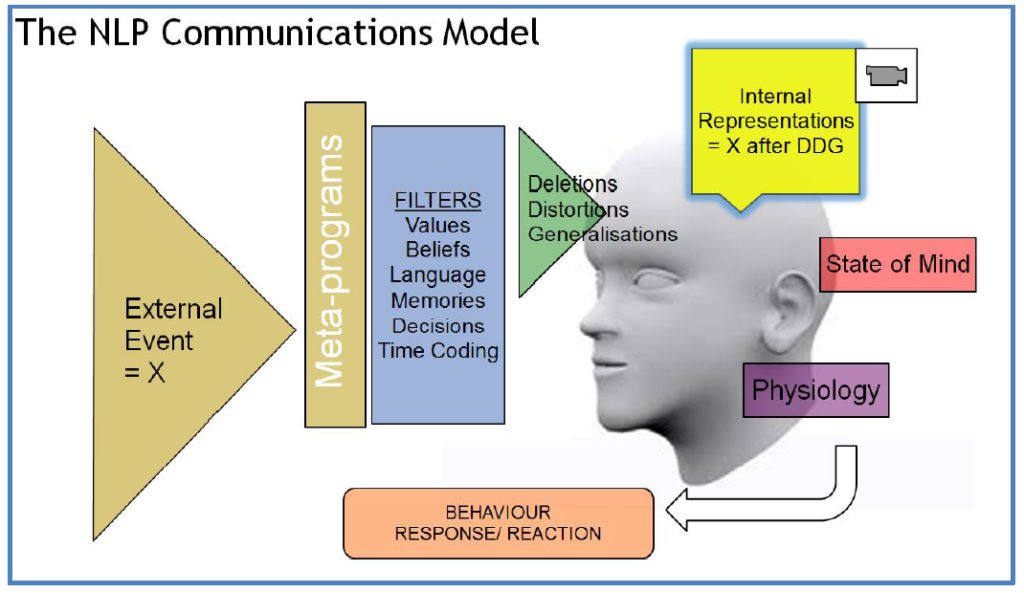
NLP maps the structures of the ego and shows us how it is created and maintained. From there it examines how we get ourselves in the way of doing what we already know how to do. In my experience, most people know what they need to do to progress, they just aren’t doing it. The reason they aren’t doing it is because they are letting their ego get in the way.
At the heart of NLP is the NLP communication model. This model is what we call a near-concept model. It models and teaches us so precisely how we function and re-present the world and those in it, to ourselves.
This model maps out and distinguishes the real world from our (subjective or mapped out) interior world. It shows us how we are running representations (movies) about reality and that we are not experiencing the actual reality itself. A big statement!
A bigger one is in our own experience we are working with and dealing with only our fantasy or imagination of the world.
The basic premise of NLP, as a model of human functioning, is – that people work perfectly well, that they have all the resources that they need, and that any problem they have isn’t them, but with their programming, habits or frames of mind.
NLP PRESUPPOSITIONS/PRINCIPLES
An example of one of the most famous and significant, coined from Alfred Korzybski- (science and sanity 1933) is:
“The map is not the territory, it is but a symbolic representation of the territory.”
All perceptions are based on a facsimile representation. It is not reality. All perceptions can be said to be accurate in as much as they are based on the internal representations from which they are derived. They are also all incomplete and may or may not accord with the represented territory (reality).
Very often, we deal with a map of reality, not reality itself – however the map is not the territory. And so we abstract reality by thinking and feeling something ABOUT reality, and we can do this upon thought and feeling forever. The more we do it, the further we get from reality. The further we get from reality, the larger the gap, the greater the emotion we can experience.
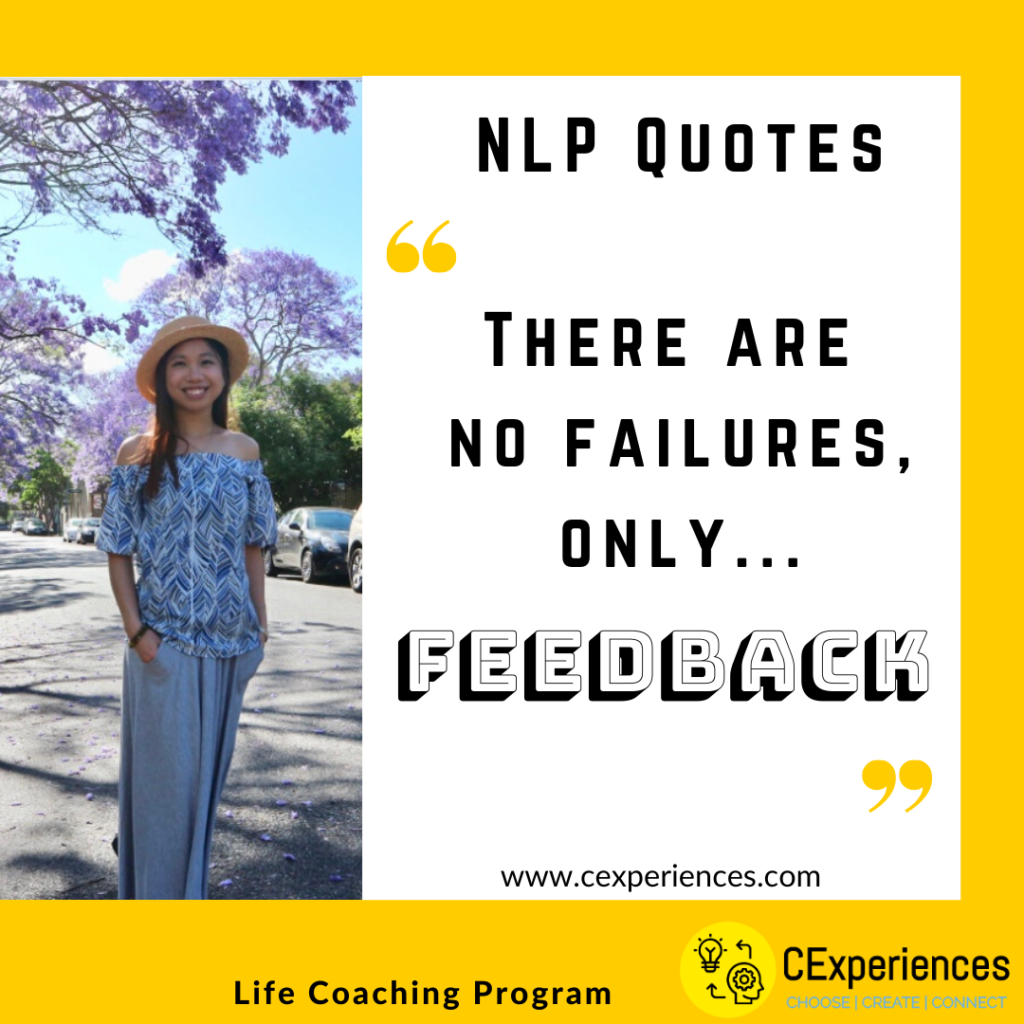
NLP TECHNIQUES & TOOLS
NLP works from the philosophy that your thoughts and beliefs affect your quality of life. If you challenge your thoughts and beliefs, you change your outcomes.
NLP teaches you up to date techniques on how to change your own mindset as well as be able to use these techniques on others.
- Meta Model Questioning
- Quadrants
- State Anchoring
- Meta States
- Framing
- Timeline
- Strategies and Modelling
- Well Formed Outcome
All top level coaches use NLP to create the most profound and speedy transformations within themselves and their clients.
Example: How to use NLP to Transform Beliefs
We were not born with the beliefs we now have. Wherever we got them, they came to us as mental understandings of the world. If we bought into them as a child, then we adopted them by osmosis. That means they are really someone else’s map for interpreting and appraising life. If we now find those beliefs limiting and unsatisfactory for our life, then we can alter them.
“The process of changing a belief is relatively easy, as long as you have the person’s consent.” (Bandler and Grinder)
1) First, identify a limiting belief you want to change
If you think about a belief as an understanding that has undesirable consequences to you, then write down some key beliefs. Be sure to include some that you would like to change. What limiting beliefs are you still entertaining in your head that you wish you didn’t?
Finish these sentence stems:
- “What I believe about myself is … ”
- “What I believe about people is … ”
- “What I believe about the world or life is … “”
- “What belief/s do you have about yourself that you’d like to change”
- “What belief limits you in some way”
2) Target your limiting beliefs
Note: The beliefs that you now evaluate as junky beliefs which interrupt your best functioning, and which sabotage your development.
For examples:
- “I can’t learn quickly.”
- “I can’t control myself.”
- “I can’t lose weight.”
- “I can’t relax.”
- “I can’t be assertive.”
- “People can’t be trusted, etc.”
3) Note internal representation
How do you represent one of your limiting beliefs in your mind?
Notice that as you think about that belief, what pictures, words, sounds, and sensations strike you?
Identify the most powerful and driving sub-modalities of that belief.
Once you have an awareness of the internal representation of the limiting belief, set it aside for a moment.
4) Identify a solid belief
What do you believe without a doubt? What is one of your solid beliefs?
Do you believe the sun will rise tomorrow?
How do you represent this a solid belief in your mind? What are the key sub-modalities present in your representation?
5) Get a representation on doubt
What are you doubtful about? Think of something you doubt.
Think of something that may be true or may not be. What are you not really sure about? How do you represent this doubt in your mind? What are the key sub-modalities present in your representation?
Doubt is when you waver from thinking something might be true to thinking it might not be true; you just don’t know.
How do you know you doubt something?
6) Make a contrastive difference
How are these phenomena (belief and doubt) different?
Run a contrastive analysis between them. Find the sub-modality differences.
For example: maybe the belief is a big picture, bright, and vivid while doubt is small, dim, and fuzzy. Or the belief may be a detailed picture, straight ahead and fills up the frame while the doubt is general, off to the right and small.
What sub-modalities tell your brain that one is a solid belief and the other is a questionable doubt?
7) Test the sub-modalities
Test the differences, one at a time, to find out which is most powerful in changing beliefs to doubt for you. Make it smaller. Remove the frame from belief picture, make it fuzzy, dimmer. Move from centre of screen to right etc.
8) Elicit a new enhancing belief you want to replace the limiting belief
What would you rather believe?
“I can learn to effectively handle criticism.”
“I believe I can learn to change my eating habits and maintain a desired body weight.”
9) Check for ecology
Suppose you had this new belief, how you would act differently?
As you anticipate it, are there any ways in which this change could be a problem for you? How will this new belief affect your work? Relationships? Skills?
10) Switch content
Switch the old Belief into Doubt. If in doubt you flip your picture off and on, and then let the limiting belief flip in and out. As you recode the belief as doubt, turn down the old content completely when the belief flips out.
At that point, switch to the content of the new belief, and turn it up.
Or, you can have the picture become so bright (or so dim) that the old content disappears. At that point put the new content in and tune the picture back in.
11) Turn the doubt into belief
Take the new belief and reverse the sub-modality changes so that you encoded what you want to believe as a strong belief.
Once you do that, amplify the new belief. Then take a moment to absorb and enjoy this new belief.
12) Test
Break state for a moment.
Think about this new belief. Do you now believe it? Think about the old belief? What happens?
Where does your brain go?
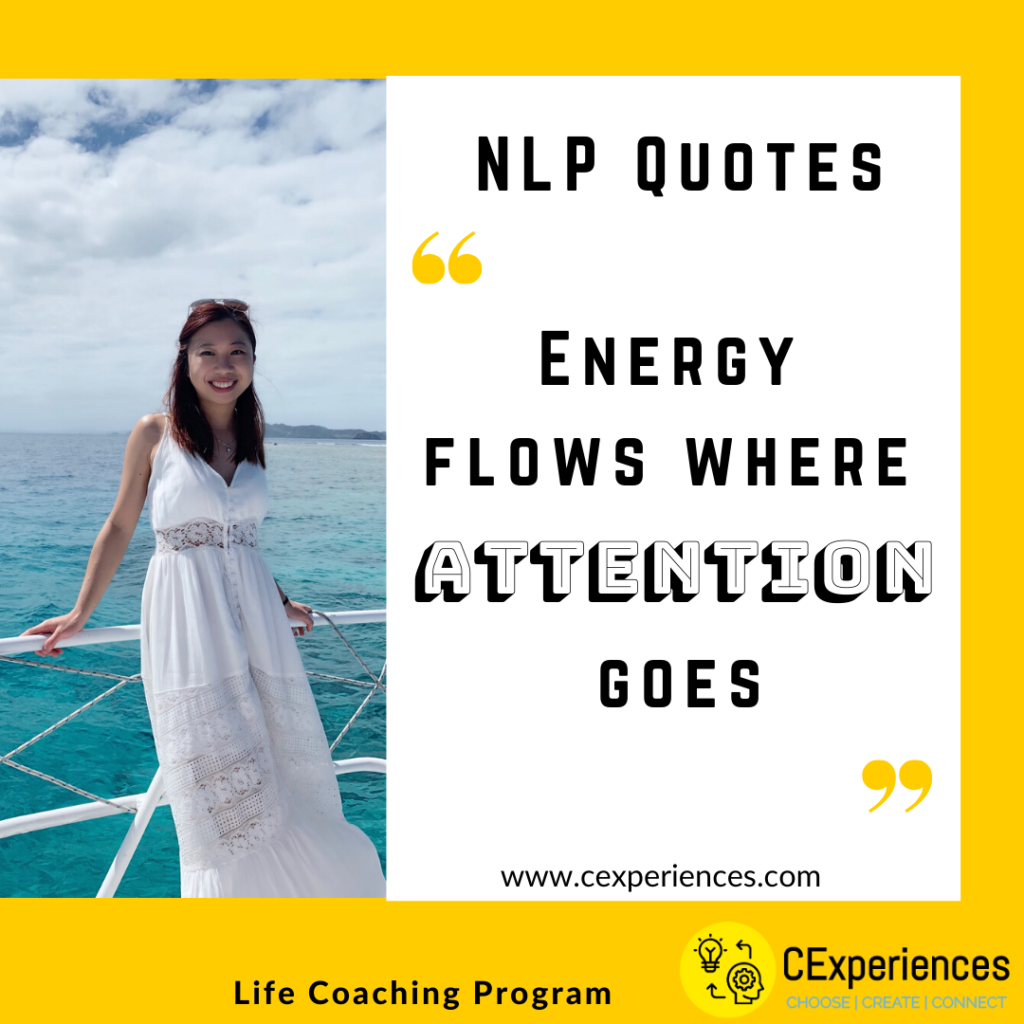
WHAT IF I WANT TO KNOW MORE?
Ready to improve your communication?
Ready to improve your relationships?
Ready to improve your life?
Ready to know more about NLP?
Ready to change your life for the better, build deeper relationships, overcome your fears and find the clarity you’re looking for to realise your potential?
Simply Sign Up to the CExperiences Life Coaching Program to Get Started!
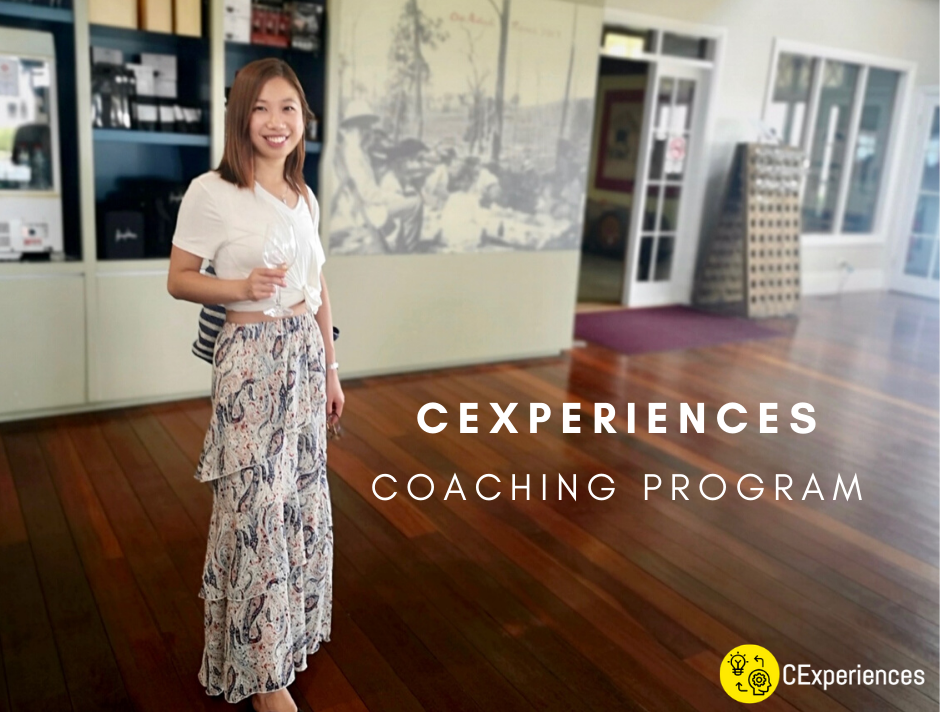
CExperiences Life Coaching Program
Part 1: NLP (Choose how you’d like to run your own brain!)
An introduction to the NLP Communication Model as a blueprint for the human system, an exploration into identifying meta programs as habituated thinking patterns to discover leverage points of change.
Part 2: High Quality and Effective Communication (Improve the quality of your relationships!)
Learn how to develop interpersonal skills as the keys of high quality communication. You’ll learn the art and skill of being fully present to another human being by learning how to truly listen, build and maintain rapport, and how to ask powerful questions that get to the heart of things.
Part 3: States and Meta States (Master your emotions and be present in every moment.)
Learn how to work with the reflexivity of the mind, reorient your thinking and feeling, change your relationship to reality. This will enable you to transform your beliefs, enhance your state and expand your perspectives for a vastly different experience of reality and quality of life.
Part 4: Trance and Timelines (Unleash your potential and step into new and exciting possibilities!)
Get an introduction in how you can use hypnotic language, focusing on creating higherlevel inductions for facilitating resourcefulness, let go of baggage in the past and set unfailable goals for the future.
Part 5: Strategies and Modelling (Be Influential in your life and embody excellence!)
Track the flow of human mind-body responses that create a behavior with Strategies & Modelling. Learn how to identify, unpack, and replicate strategies of excellence and learn conversational reframing patterns to increase your persuasiveness and influence.
Some of the benefits that can expect from program include:
- Learn to run your own brain – and help others run theirs
- Manage your own moods, attitudes and states (eg. when public speaking, asking for a pay rise or having difficult conversations)
- Effectively manage conflict – create healthier interactions
- Skillfully manage outcomes and agreements (getting the outcomes you want)
- Achieve high levels of Emotional Intelligence (EQ)
- Create effective rapport with significant others – deepen and accelerate relationships
- Develop growth in terms of your worldview (capacity to hold more perspectives)
- Effectively engage and collaborate with significant people in your personal and professional life
- Lead and influence performance through the creation and sharing of powerful meanings
- Learn to facilitate outcomes through asking powerful questions that get directly to the heart of the matter
Schedule a Discovery Call with Cyndi
Let’s have a chat and see how I can help you.
My coaching vision is to guide, support, challenge and empower you to grow by analysing your current situation, identifying limiting beliefs and other potential challenges and obstacles you face, offering you a fresh and different perspective, and devising a custom plan of action designed to help you achieve specific outcomes in your life.
I’m here for you if you need me.
